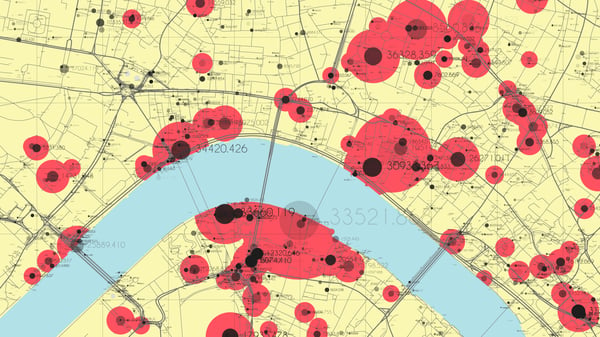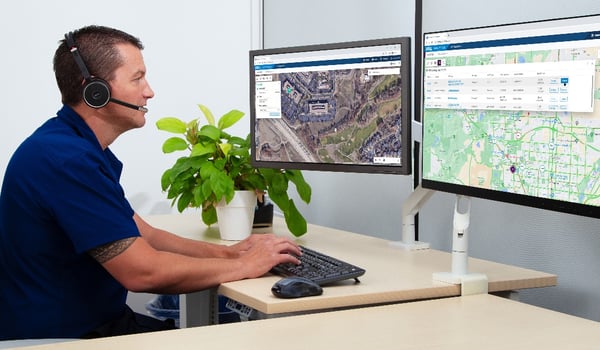4 Must-have Data Points for Dispatch-Billing Alignment and Maximum Reimbursement
How to Get Started with Your EMS or Fire Grant
Did you know there is billions of dollars of grant money available for EMS and Fire agencies? There is! The problem is, I know grant writing can be a daunting task
Was this information valuable?

Did you know there is billions of dollars of grant money available for EMS and Fire agencies? There is! The problem is, I know grant writing can be a daunting task. While no two grant programs are alike, there are resources out there that will steer you through the tedious process of collecting the information critical to nearly all grant opportunities. One such resource is the Five Steps to Grant Success developed by FireGrantsHelp.com. Here’s a quick snapshot of the step-by-step guide, which is applicable for both Fire and EMS agencies.
1. Identify Projects/Budget
Identify and prioritize department projects that would benefit from grant funding. When considering potential projects for grant funding, give priority to those that will produce a quantifiable operational benefit. Be prepared to fully explain how the proposed project will enhance your department’s operations, and predict any potentially negative impact to your department’s operations if the project is not funded.
Once your department has identified a particular project, it is now time to determine the project’s cost and prepare a provisional budget. Your budget should include all costs associated with the project’s implementation: equipment, accessories, additional training if required, etc.
2. Search for Available Grants
Now it’s time to search for available grant opportunities. You can use resources such as the FireGrantsHelp.com search engine to locate available grants. You can perform a search by category (Federal, state or corporate) or by selecting your state on our interactive grant map to show all available opportunities. Search results will provide a brief synopsis of the grant, as well as: application period dates, contact information, links to the grant homepage, and more.
Learn about Golder Ranch Fire District Grant Success
3. Grant Research
Now that you’ve successfully located an available grant, it’s imperative that you research the opportunity so that you fully comprehend all eligibility requirements, eligible activities, local cash match (if required), etc. Take advantage of program-sponsored information sources and workshops. Most grant programs will provide applicants with thorough guidance documents and workshops, which can provide potential applicants with invaluable information about program eligibility requirements, eligible activities, deadlines and more.
The number one reason why grant applications are denied is failure to follow the directions. When looking at a guidance document, the best bet is to go through it three times, looking for items that are "must do's," "should do's," and "could do's."
Pay the closest attention to the “must do's”; these are the items that can cause immediate elimination if not followed precisely.
4. Narrative Writing/Application Preparation
On to the most dreaded portion of the grant process: the narrative. With the narrative, preparation is the key. Long before a grant’s application period nears, departments should gather information about where grant funds could be best utilized. Which areas would best improve your department’s ability to safely train and respond? Build a strong case for your department by explaining how this new equipment/capability will enhance your department’s response capability. It may also be beneficial to explain how a lack of funding might negatively affect your department’s operations.
Prepare your narrative in advance; by doing this, you allow for others to proofread your draft prior to submitting your application, which is critical since you can’t make changes later. Narratives should be clear and concise, thoroughly explaining your department’s needs and how funding will enhance your department’s operations. Avoid pre-formatted grant narrative templates; your firsthand knowledge of your department’s operations will enable you to write a more persuasive narrative. Lastly, always write your grant narrative in the required format when applicable.
5. Prepare & Submit Your Application
It’s time to prepare and submit your application. This is the time to verify and re-verify that you have followed the instructions carefully, all information requested in the application is accurate, and you’ve had a third party proofread your grant narrative.
Always use online applications when possible. Many grant programs now offer the ability to apply online, which can dramatically simplify the application process. Online applications also automatically prevent you from submitting an incomplete application. Once your online application is submitted, an email confirmation receipt will follow. No need to worry about your application packet getting lost in the mail.
Related Posts
How EMS Agencies Can Reframe Need and Refocus Resources With Geospatial Analytics
How To Minimize Radio Chatter and Reduce Guesswork With Smarter Dispatch Resource Management
ZOLL Pulse Blog
Subscribe to our blog and receive quality content that makes your job as an EMS & fire, hospital, or AR professional easier.
ZOLL Pulse Blog
Subscribe to our blog and receive quality content that makes your job as an EMS, fire, hospital, or AR professional easier.




